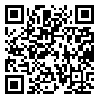1. Adelikhah, M., R. Vaeztorshizi, M. Rokouei and D. Tohidi. 2008. Inbreeding and its Effect on Productive Traits in Zandi Sheep. 3rd National Congress on Animal Science. Mashhad, 15-16 October (In Persian).
2. Analla, M., J.M. Montilla and J.M. Serradilla. 1999. Study of the Variability of the Response to Inbreeding for Meat Production in Merino Sheep. Journal of Animal Breeding and Genetics, 116: 481-488. [
DOI:10.1046/j.1439-0388.1999.00199.x]
3. Bahri Binabaj, F., H. faraji arogh, M. Rokouei, M. Jafari and A. Mohammad Hashemi. 2012. Estimation of inbreeding trend and its effect on growth traits, longevity and skin score of karakul sheep breed. 5th Congress on Animal Science, Isfahan, August, 760-764 (In Persian).
4. Bijma, P., J.A.M. Van Arendonk and J.A. Woolliams. 2001. Predicting rates of inbreeding for livestock improvement schemes. Journal of Animal Science, 79: 840-853. [
DOI:10.2527/2001.794840x]
5. Ercanbrack, S.K. and A.D. Knight. 1998. Responses to various selection protocols for lamb production in rambioullet, targhee, columbia and polypay sheep. Journal of Animal Science, 76: 1311-1325. [
DOI:10.2527/1998.7651311x]
6. Falconer, D.S. and T.F.C. Mackay. 1996. Introduction to quantitative genetics. 4th Ed. Longman Group, LTD., Harlow, Essex, UK.
7. Farhadi, M. 2010. Study of Inbreeding on productive and reproductive traits in lori-bakhtiari sheep. master's thesis animal sciences. Faculty of Agriculture Shahrekord University, 90 pp (In Persian).
8. Farhangfar, H. and Gh. Mottaghineya. 2013. a study on the effect of inbreeding depression on growth traits in baluchi sheep. Journal of Research on Animal Production, 7: 92-105 (In Persian).
9. Gholambabaeian, M., A. Rashidi, M. Razmkabir and A. Mirza Mohammadi. 2012. Inbreeding coefficient estimate and its effects on pre-weaning traits in moghani sheep. The 5th Congress on Animal Science, Isfahan, August, 71-75 (In Persian).
10. Hanford, K.J., L.D. Van Vleck and G.D. Snowwder. 2005. Estimates of genetic parameters and genetic change for reproduction, weight and wool characteristics of rambouillet sheep. Small Ruminant Research, 51: 23-28.
11. Khojastehkey, M., A. Aslaminejad, M.A. Abbasi and K. Nobari. 2016. Investigation the effect of a threshold trait levels on the accuracy of breeding value estimations and genetic, phenotypic and in breeding trends in a breeding flock. Research on Animal Production, 14: 173-179 (In Persian). [
DOI:10.29252/rap.7.14.179]
12. Maximini, L., A. Gomez and B. Waltl. 2011. Inbreeding and effect on performance traits in austrian meat sheep. Original Scientific Paper, 3: 213-217.
13. Mirza Mohammadi, A. and A. Rashidi. 2012. Estimation of genetic parameters and evaluation of inbreeding effects on birth weight and mortality in zandi sheep. The 5th Congress on Animal Science, Isfahan, August, 561-565 (In Persian).
14. Motaghineya, Gh., H. Farhangfar and M. Jafari. 2012. A study of inbreeding trend and its effect on wool weight of baluchi sheep in abbas abad breeding center of mashhad. Journal of Research Animal Sciences, 2: 121-129 (In Persian).
15. Pedrosa, V.B., J.R. Santana, P.S. Oliveira, J.P. Eler and J.B.S. Ferraz. 2010. Population structure and inbreeding effects on growth traits of santa inês sheep in Brazil. Small Ruminant Research, 93: 135-139. [
DOI:10.1016/j.smallrumres.2010.05.012]
16. Rashedi Dehsahraei, A., J. Fayazi, M.T. Beige Nasiri and M. Vatankhah. 2016. Genetic and phenotypic analyses of body weight traits for lori-bakhtiari lambs at different Ages. Research on Animal Production, 7: 157-164 (In Persian). [
DOI:10.29252/rap.7.14.164]
17. Rzewuska, K., J. Klewiec and E. Martyniuk. 2005. Effect of inbred on reproduction and body weight of sheep in a closed booroola flock. Iranian Genetic Animal Breeding, 4: 237-247.
18. Saadatnouri, M. and S. Seyahmansour. 2002. Principles and breeding sheep. Ashraf publications, Tehran, 405 pp (In Persian).
19. Sargolzaei, M., H. Iwaisaki and J. Jacques Colleau. 2006. A Software package for pedigree analysis and monitoring genetic diversity.
20. Sataei Mokhtari, M., A. Rashidi, A. Barazandeh, H. Domari and S. Molaei. 2009. Genetic analysis wool weight in the first shearing of kermani sheep. proceedings of national conference on animal fibers. Tabriz University, 6: 13-15 (In Persian).
21. Sheikhlu, M., M. Tahmurespoor and A. Aslaminejad. 2011. Study inbreeding of baluchi sheep in mashhad abbas abad station. Journal of Animal Science, 3: 453-458 (In Persian).
22. Talebi, M.A. and M.A. Edris. 1998. Estimation of environmental and Genetic Parameters influencing on pre-weaning traits in lori-bakhtyari sheep. Iranian Journal of Agricultural Science, 29: 325-333 (In Persian).
23. Vatankhah, M., M.A. Talebi and M.A. Edris. 2008. Evaluation of phenotypic and genetic variation for economic traits in a flock lori bakhtiari sheep. Animal Sciences Researches in Science and Technology of Agriculture and Natural Resources, 41: 381-390 (In Persian).
24. Vatankhah, M., M. Moradi Shahrbabak, A. Nejati javarmi, R. Miraei Ashtiani and R. Vaez Torshizi. 2009. Determination of breeding objective and economic values for Lori_Bakhtiari breed of sheep in the village system. Animal Science Research, 82: 17-25 (In Persian).
25. Weigel, K.A. 2001. Controlling inbreeding in modern breeding programs. Journal of Dairy Science, 84: 177-184. [
DOI:10.3168/jds.S0022-0302(01)70213-5]
26. Weiner, G., G.J. Lee and J.A. Woolliams. 1992. Effects of rapid inbreeding and of crossing of inbred lines on the body weight growth of sheep. Animal Production, 55: 89-99. [
DOI:10.1017/S0003356100037314]
27. Yarahmadi, B., M. Eslami and N. Taherpour. 2007. Age and sex effect on some properties of wool. Journal of Agricultural Sciences, 13: 203-210 (In Persian).




